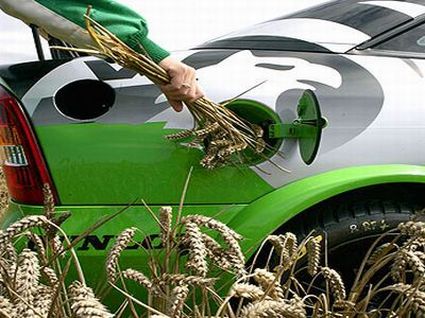Anyone who’s been paying attention has heard talk about alternative fuels, including biofuels, and how alternative fuels and alternative fuel vehicles are good for the environment as well as the fact that they allow countries to reduce their dependence on foreign oil.
Bio-diesel fuel is generally made from vegetable oil, such as soybean, peanut, or canola oil, and can be used either by itself or in combination with regular diesel to run diesel cars, trucks and buses.
Indeed, there are people today driving bio-diesel vehicles that run 100% on biofuels like recycled vegetable oil they get for free from their local fast food restaurants.
Diesel vehicles built from 1995 on can all use bio-diesel without modifications, even mixing diesel and bio-diesel in the same fuel tank, because the newer engines don’t use rubber rings, which can be eaten away by bio-diesel. And conversion kits are readily available for older diesel engines.
(Interestingly, the original diesel engines back in the 1890s were actually designed to run on peanut oil!)
Bio-diesel reduces carbon emissions…with pure bio-diesel reducing emissions by 90% over petroleum diesel. Not only that, but vegetable-based bio-diesel is what is called “carbon neutral”. In other words, the amount of carbon emitted is offset by what the plant matter took in from the atmosphere before harvesting.
Biofuel is also bio-degradable so a biofuel spill is not the environmental crisis that an oil spill would be. And bio-diesel fuel can be domestically grown, eliminating our dependence on foreign oil.
Bio-diesel and petroleum diesel mix extremely well and are commercially available in variety of combinations, ranging from 5% bio-diesel up.
As with all cars, however, there are also downsides, as use of bio-diesels in vehicles increases nitrogen oxide, which is also a harmful pollutant, contributing to acid rain, ground-level ozone, and global warming, among other things. However, the EPA has put strict emission standards and environmental regulations into place to reduce the emission of nitrogen oxide by 90% or more. The use of better catalytic converters, such as are currently used in Europe, will help significantly.
Another downside could be of more practical concern to the bio-diesel car owner in colder areas. Bio-diesel has what is called a “high clouding point”. This means that bio-diesel tends to solidify at low temperatures, making it more expensive to transport in colder climates, raising the price at the pump, and also may require using lower-blend bio-diesel in the really cold weather. For those people using 100% vegetable oil, which can gel at temperatures under 25 degrees, a system that heats and filters the fuel is essential, and you might need to run an alternative fuel tank for running regular or lower-blend diesel.
However, with better gas mileage, lower emissions, and the use of renewable, domestic sources, the upsides actually make biofuel cars a “greener” option than even hybrids.
Take Care,
Steve Longoria
Next, click here to discover how EarthShips can mean sustainable living for all!
Article Source:
http://EzineArticles.com/?expert=Steven_H._Longoria

